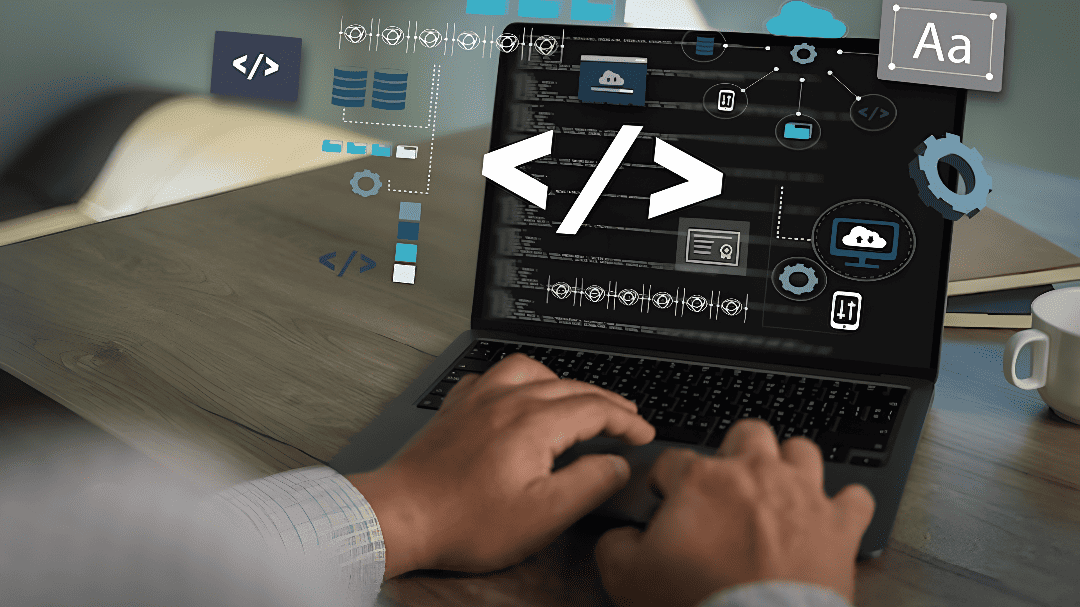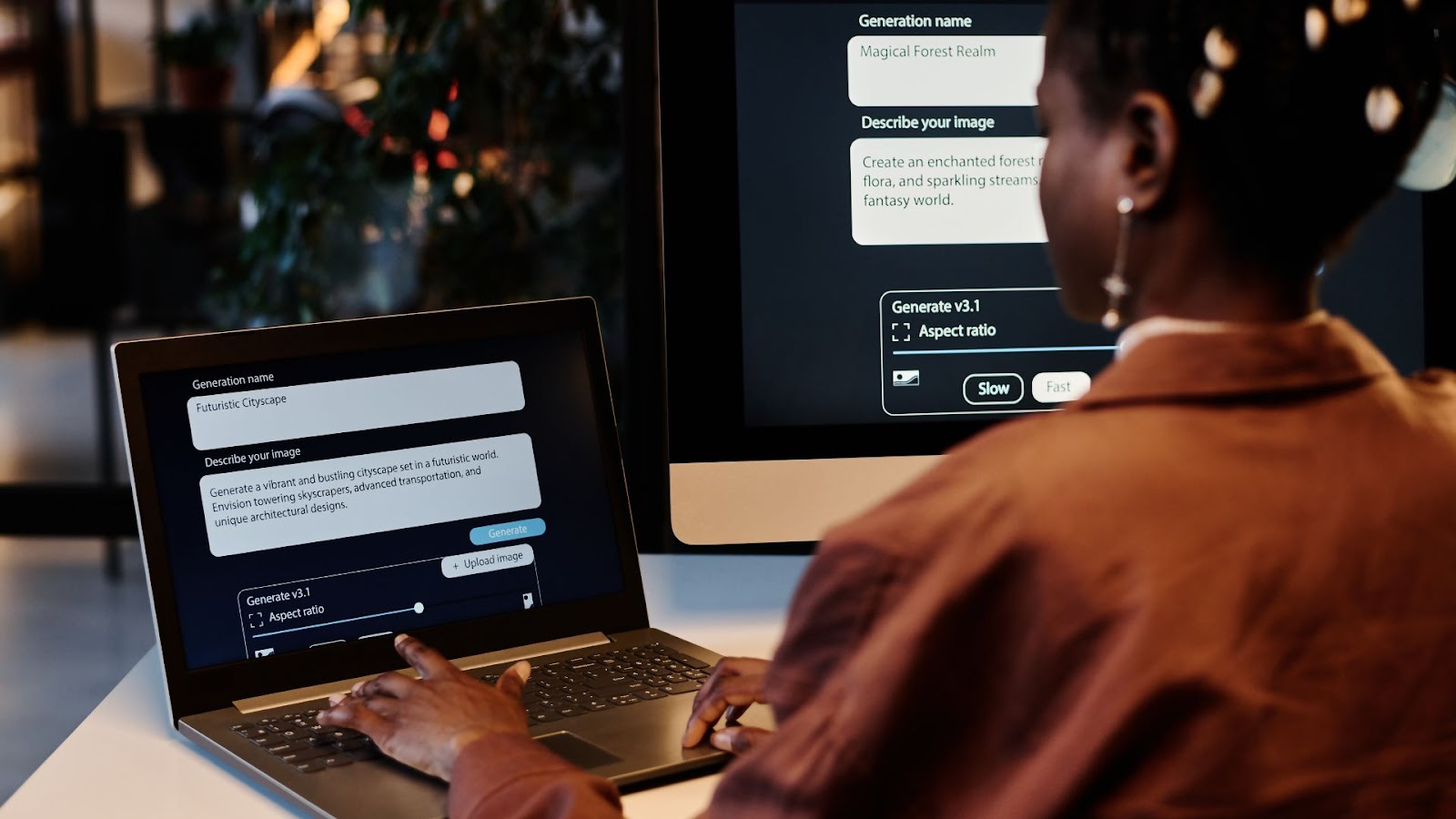Picture this: You work in human resources for a high-profile Fortune 500 company in New York. You’ve got three months to hire for two new remote roles at your company. To find the right candidates, you post the job descriptions on Microsoft company LinkedIn and other social media sites, do some outreach on a few job boards, and share the job postings with outside national recruiting teams. Within one day, more than 1,000 resumes are submitted. You grab your super-sized latte and settle in for a few days of reading through resumes. It’s going to be a long few months.
Sound familiar? Finding top talent is a multi-step process, and those who have been in the game for a while know that these days, the recruitment process is not for the faint of heart. Talent acquisition company Ideal found that it takes an estimated 23 hours for resume screening and shortlisting candidates for a single hire.
Not to worry, though, there’s an app — or a suite of tools — to significantly cut this process short. Clockwise offers the GOAT — the greatest of all time, for those who don’t know — of AI-powered scheduling tools for harried HR teams everywhere. Using automation and machine learning, Clockwise’s AI tools streamline workflows for hiring teams, making scheduling interviews and other repetitive tasks a breeze, ultimately reducing the time to hire for each role. This is just one of many use cases; the AI features can be used for any individual or team with ever-changing schedules.
But first, let’s dig into how AI technology is the latest and greatest in HR tech.
What is AI for recruiting?
Technically speaking, talent acquisition teams have been incorporating artificial intelligence into their practices for several years now. For example, when you’re job hunting on LinkedIn and get notified that you are a top match for certain positions, that’s AI at work. The use of AI across industries is rapidly expanding, and the human resources field is no exception.
‘AI for recruiting’ is a phrase that refers to the array of AI tools that enable human recruiters to use predictive technology and real-time data, among other AI features, to get an edge on candidate sourcing to find quality candidates and speed up hiring decisions.
With hundreds — and sometimes thousands — of applications rolling in for in-demand roles, recruiters are feeling the pressure to quickly identify the top candidates in their applicant tracking system and get to the offer stage before another company does. Implementing AI technology in the hiring process offers a ton of benefits for HR professionals looking to snap up the best candidates. And when utilized correctly, AI tools can also enhance the candidate experience (read: no more ghosting job applicants).
Benefits of using AI in the recruiting process
Even at this early stage of generative AI (GAI), there’s a tool for almost every step of the recruitment process. There are several benefits of using AI for talent acquisition, with most advantages falling into one of the following categories:
- Automation of time-intensive tasks (often repetitive) such as candidate screenings, outreach, and scheduling, allowing you to focus on more high-value tasks
- Enhanced candidate engagement, resulting in a more positive experience for job seekers
- Quality of hire improvements through the use of metrics and other assessments
As you learn about all the software and features to make the hiring process easier, it can often get overwhelming. Here’s a pro tip: create a recruitment plan, and then take stock of the tasks where using AI tools may work in your favor.
Our six-step employee recruitment plan includes AI tools for recruiting, templates, and checklists for managing open positions, tracking candidates, budgeting tools, and more.
In the meantime, read on for a rundown of some of the most in-demand AI features for talent acquisition.
AI recruiting tools
Advances in HR technology, such as the rise of AI recruiting software, are helpful in the recruitment process, but rest assured: it will never replace the recruiter’s role. According to LinkedIn, nearly 70 percent of recruiters say AI is saving them time. Here are some of the top ways HR professionals can use AI to save time on tedious tasks, streamline hiring, and get back to the art of recruiting.
Speed up candidate screening
No more reading through resumes one by one. AI tools with natural language processing capabilities can screen thousands of resumes at a time and identify qualified candidates with employer-desired skills and keywords included in their applications. As long as you supply the keywords to search for, AI can do the hard work of surfacing potential candidates who have included those terms in their submitted materials.
This process automates the narrowing down process, saving recruiters precious hours of time. When using this feature, it’s important to review the selected keywords to ensure they do not reflect human biases that may result in selecting one group of qualified candidates and eliminating another.
Draft and customize job descriptions and candidate outreach
Tools like ChatGPT can assist human recruiters in drafting job descriptions, emails to schedule interviews, and messaging about the onboarding process. And LinkedIn is getting in on the action with their launch of AI-assisted messages, allowing users to create personalized outreach to job applicants. Once you get a first draft from the AI tool, you can add your finishing touches to it or create templates that can be used in the future.
While non-wordsmiths are rejoicing, it’s still worth noting that the best use case for writing-assistant tools is as a starting point — it’s still on you to read through each draft and make changes as needed. For descriptions of job openings, make sure the final draft is optimized to include inclusive language that will encourage a diverse applicant pool. Check out intelligence software company Clovers’ helpful guide to writing inclusive job descriptions.
Automate scheduling interviews
Clockwise’s AI Scheduler can save you hours of time spent scheduling interviews by automating the entire process. Instead of cross-checking calendars to find the best times to meet, users can type a request to find a window of time and AI will do the rest. Whether you need to schedule time with a larger group or set up a last-minute meeting, Clockwise can navigate through multiple schedules, even rearranging meetings day by day to find a time that works for everyone. It even integrates with Slack and Asana!

Real-time engagement with candidates
These days, with so many candidates for each open role, it’s hard to respond to individual questions in a timely manner, if at all. Now recruiters can answer candidates’ questions in real-time, day or night, using chatbots. Simply provide a list of responses to commonly asked questions and let the technology do the talking.
Quickly analyze interviews
As described in this Ideal article, AI tools can be used to assess candidates’ facial expressions, word choice, speech patterns, and overall responses during video interviews, enabling recruiters to more systematically determine a candidate’s fit for a specific role or even the work culture of the organization. While this is innovation at its finest — and, we’ll admit it, maybe a little creepy — recruiters will need to be sure to set parameters on what this assessment consists of, to mitigate bias of what a “successful” candidate looks and sounds like.
Limitations of AI in recruiting
There are several advantages to using AI tools for recruiting, but it’s important to be aware of the risks of using the technology, and how to reduce those risks. Algorithmic bias is one such issue that requires an intentional and consistent strategy to protect the gains organizations and society have made in creating more inclusive workplaces.
The Harvard Business Review (HBR), defines algorithmic bias as instances where artificial intelligence makes decisions that systematically disadvantage certain groups of people. “Algorithmic bias often occurs because certain populations are underrepresented in the data used to train AI algorithms or because pre-existing societal prejudices are baked into the data itself,” note the authors of the HBR article.
“The Diverse Workforce” newsletter from LinkedIn shares examples of algorithmic bias:
- Historical data used to predict future performance: This data may contain human biases from the past, biased against underrepresented groups who have been disadvantaged in the workplace.
- Screening candidates for certain “red flags”: For example, an algorithm used to weed out candidates who “job hop” — a criterion that may disproportionately impact women and candidates of color — may decrease the number of diverse candidates.
Artificial intelligence was created by non-perfect people, so it’s not surprising that flawed algorithms exist and can perpetuate unconscious bias and other human biases. However, the impacts of those biases on decision-making are far-reaching: they can hinder a company’s ability to hire the best talent and create a less diverse workforce, all of which ultimately can impact revenue and economic opportunities for both businesses and families.
The move towards equitable AI
As the risk of bias in AI tools becomes more apparent, a new movement is developing to mitigate these risks across industries. This effort is called equitable AI, and policymakers, business owners, and the engineering community are just a few of the key players working to create comprehensive solutions.
In the meantime, The Diverse Newsletter offers a few practical ways recruiters can do their part to create a more level playing field and foster more equitable decision-making when it comes to hiring:
- Remove personal information from resumes: Personal information such as name, age, gender, race, etc. can often lead to unconscious bias in the algorithm. By removing this information, you can help to level the playing field.
- Include a diverse set of candidates in the training data: If the algorithm is trained on a diverse set of resumes, it will be less likely to display bias against any particular group.
- Randomly select candidates from different groups: This ensures that no one group is disproportionately represented in the pool of candidates being considered.
- Test the algorithm regularly: Regular testing can help to identify any areas where bias may be creeping in.
AI’s impact on the role of the recruiter
Going forward, we expect artificial intelligence to continue to revolutionize the talent acquisition industry. While it’s not yet clear the extent to which it will change, current predictions of how it will impact talent acquisition don’t just include changes to the hiring process, but to the role of the recruiter.
The good news is that the consensus on the potential changes is generally positive. It’s not so much whether there will still be recruitment jobs in the future, but what those jobs will be. A LinkedIn article about how AI will change hiring quoted a Goldman Sachs report on this change: “Worker displacement from automation has historically been offset by the creation of new jobs, and the emergence of new occupations following technological innovations accounts for the vast majority of long-run employment growth.”
Here are some high-level predictions of the evolving role of human recruiters in the years to come.
Talent acquisition roles may become more specialized
As described in a LinkedIn blog post about the future of recruiting, recruiters may be expected to do away with a generalist role and shift toward more specialized positions that focus on themes like DEI, helping current employees move within a company, and learning and development.
Outbound recruiting will become a bigger focus for recruiters
Imagine a chatbot cold-emailing a prospective candidate and persuading them to apply for a job — it wouldn’t work. Thanks to the magic that is AI, recruiters’ newfound time may be spent doing more of the outbound reach to top talent who aren’t looking for a new role. That kind of persuasiveness and charm is something that technology can’t replicate, and recruiters can fill in that gap to get a larger talent pool of the most desired candidates.
AI will put the human back in human resources
It seems counterintuitive, but the rise of artificial intelligence in recruitment will most likely result in a need for recruiters to do more of the one thing GAI can’t do: be human. Recruiters will need to rely more on soft skills like relationship-building, negotiation, persuasion, and understanding a candidate’s needs.
“It’s almost like the service you experience in executive search will become the standard in recruiting,” said Jo-Ann Feely, global managing director of innovation at the talent solutions firm AMS told LinkedIn, “because that depth of understanding — of what skills are needed, what the team makeup should be, and whether the manager might be willing to hire someone with 60% or 70% of the skills needed — will become even more important.”
Here are some content and training resources that will help you brush up on soft skills and keep up with the latest news in the world of recruiting:
- LinkedIn’s Talent Blog: Get must-read articles, tips, and predictions for talent professionals
- 6 Soft Skills Recruiters Will Need in the Age of AI: Read up on the top skills that will set you apart from your peers
- Courser’s online soft skills certificate courses: Learn about everything from mastering tough subjects to effective collaboration
Upskilling on AI is the best safeguard for a changing landscape
The best way to prepare for all of these changes is to upskill your team on the tools that are available now. Take some time to experiment with different AI platforms to see what works best and what doesn’t, and how it impacts the overall hiring process and everyone involved. Factors to consider include evaluating whether the quality of hire goes up or down after using AI tools, how it impacts the candidate experience, and cost savings. There’s no one-size-fits-all approach to what will work, so don’t hesitate to test different products as they come to market and nix the ones that don’t work for your company.
With AI technology, the talent recruitment process has the potential to be faster and more efficient, ultimately leading to a better experience for recruiters and candidates alike. How that happens is up to us, and it starts with trying out the tools. It’s time to work smarter, not harder.
Learn more about how Clockwise uses AI to create a dynamically changing calendar that moves in real-time to your daily needs. If you’re a recruiter who wants to make time to meet with candidates, without sacrificing much-needed Focus Time, try Clockwise for free today.


.gif)
.png)



